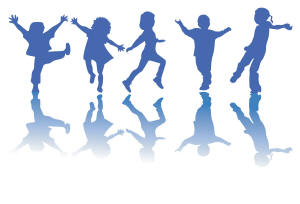
Michael's Hands
Kinesiology
| By: Michael Manion | Viewed: 12/25/2025 |
Topics/Keywords: #Kinesiology | Page Views: 8001 |
| All about Kinesiology. | |||
What is Kinesiology?

The word Kinesiology is derived from the Greek words kinesis (movement) and kinein (to move), also known as human kinetics, is the science of human movement. It is a discipline that focuses on Physical Activity. A kinesiological approach applies scientific based medical principles towards the analysis, preservation and enhancement of human movement in all settings and populations. Kinesiologists work in research, the fitness industry, clinically, and in industrial environments. Studies on human motion may be supported by computer vision, using stereo camera systems for pose recognition and motion modeling.
The Basics of Kinesiology
It is important to know that the definition of physical activity is a highly debated topic. Not all individuals who are associated with the field of kinesiology agree on the technical definition of physical activity. These debates range from whether or not an action is voluntary or involuntary, purposeful in direction within a specific activity, as well as the difference between physical movement and physical activity.
One way to think about the relationship between movement and activity is this: Movement is a necessary but not a sufficient condition for physical activity. If you are performing a physical activity, you are using movement; but not every movement is a physical activity; i.e. blinking an eye, swallowing, contraction of diaphragm.
One definition of physical activity is as follows: Voluntary movement intentionally performed in order to achieve a goal in sport, exercise, or any other sphere of life experience. In relation to this definition of physical activity, one definition of movement is as follows: Includes any change in the position of one's body parts relative to each other.
What's a Kinesiologist?
In North America, kinesiologists are conferred a Bachelor of Science degree (or higher) in Kinesiology, Human Kinetics, or Human Physiology. In Australia or New Zealand, they are often conferred an Applied Science (Human Movement) degree (or higher).
Kinesiologists assess human movement, performance, and function by applying the sciences of biomechanics, anatomy, physiology, and motor learning. These can range in all fields, sports and endeavors of movement. Thus kinesiologists are involved in the rehabilitation, prevention, and management of disorders to maintain, rehabilitate, or enhance movement, function or performance in the areas of sports, recreation, work, and exercise.
Kinesiologists also provide consulting services, conduct research, and develop policies related to rehabilitation, human motor performance, ergonomics, and occupational health and safety. This form of kinesiology can be distinguished from what is called applied kinesiology, an alternative medicine technique related to chiropractic techniques. It has evolved since 1964 from the work of an American chiropractor named George Goodheart . Applied kinesiology utilizes muscle testing techniques and energy balancing through massage, proper nutrition and exercise. It also makes use of traditional Chinese medicine. It wasn’t until 1973 that John They wrote a book called Touch for Health which laid out this work for the general public.
©1998-2025 Michael Manion
All Rights Reserved
